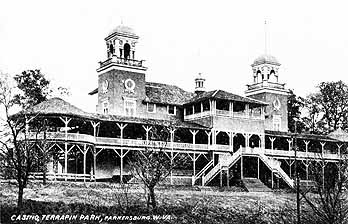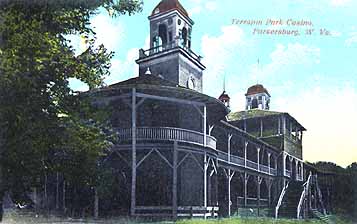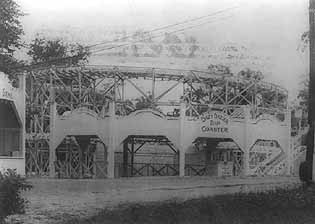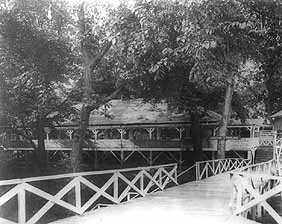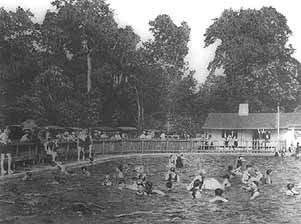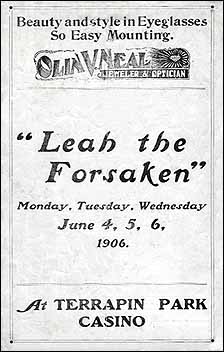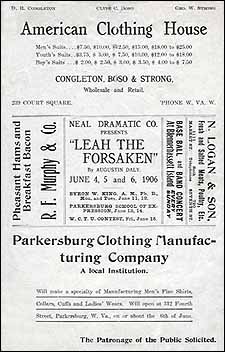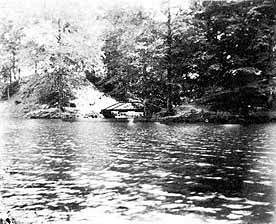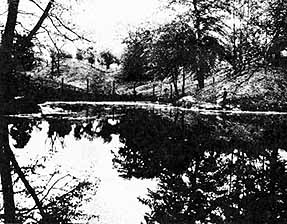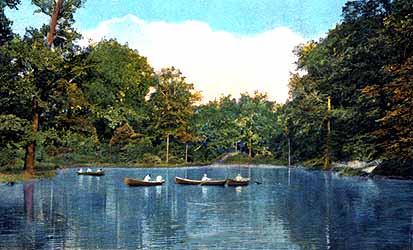Terrapin Park
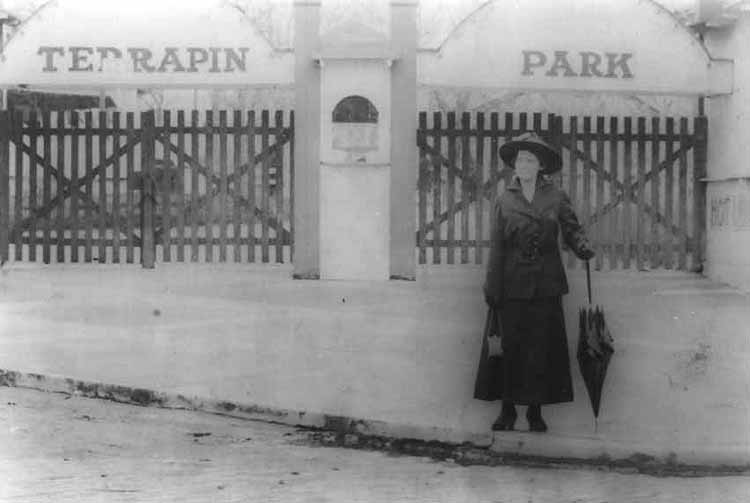
The Terrapin Park gate was located off of Dudley Avenue, roughly in the 2500 block.
(Courtesy of Artcraft Studio, 519-521 Market Street, Parkersburg, WV 26101; 304 485-5771)
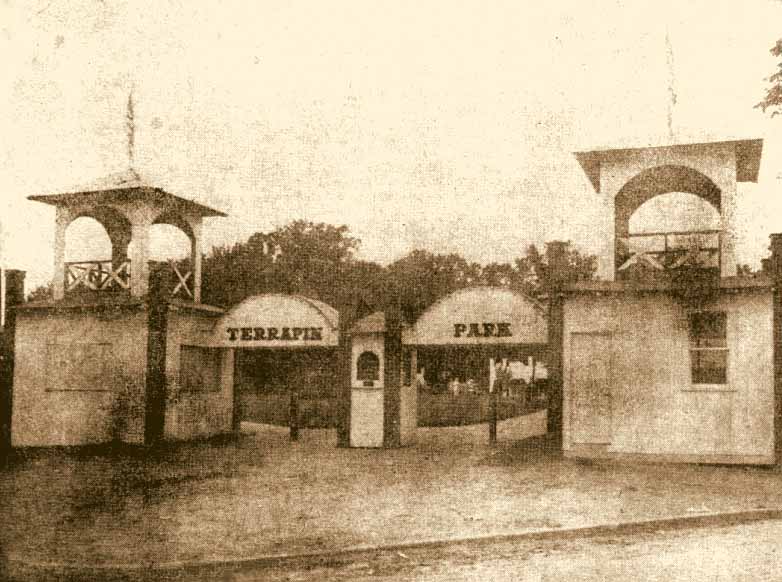
Entrance from Dudley Avenue.
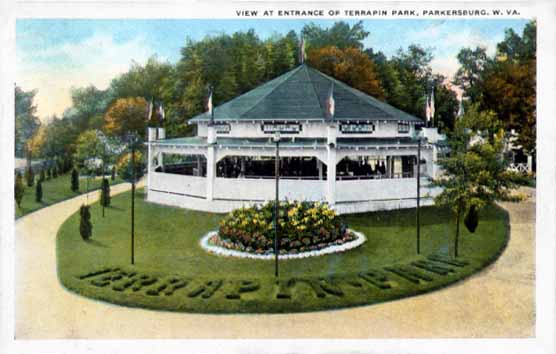
The Terrapin Park merry-go-round.

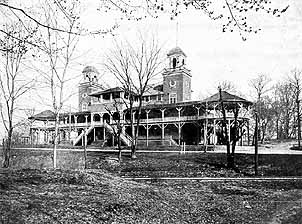
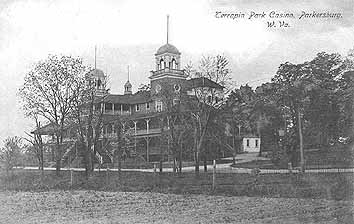
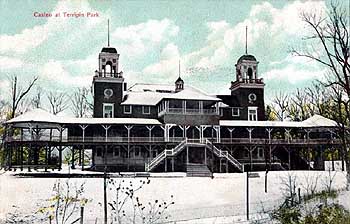
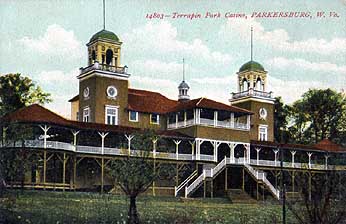
In 1899-1900, J. M. Carfer built the Terrapin Park Casino at Terrapin Park, a picnic area just off Dudley Avenue (roughly in the 2500 block) already popular because of its man-made lake. The spacious $15,000 casino had a 2000-seat auditorium, bowling alleys, a dance hall and wide verandas. The building's frontage was 200 feet. The outer loop of Parkersburg's street car system went through Terrapin Park, and the Inter-urban line between Parkersburg and Marietta connected with it at Pottery Junction just below the lake (now the intersection of Murdoch and Emerson), so everyone in the area had easy access.
|
Many stock companies and vaudeville troupes performed at Terrapin Park. W. C. Fields was a star attraction. In 1913 a roller coaster, merry-go-round and skating rink were added, along with a pool hall and shooting gallery. By now the park was getting national attention.
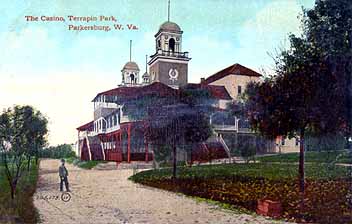
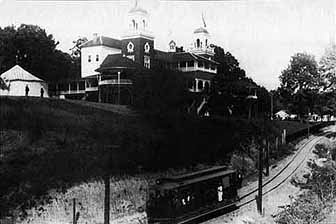
|
But by 1916 the privately owned Terrapin Park was in decline. The City of Parkersburg was luring picnickers to the upgraded (and free) City Park. Then, on August 28, 1917, a mysterious fire swept through the casino, burning it to the ground.
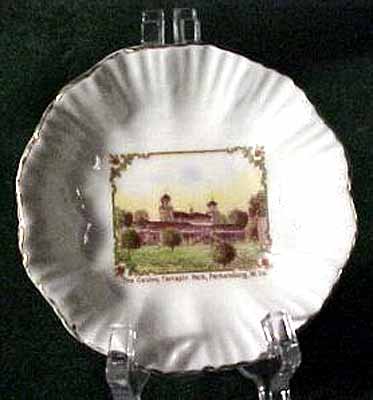
A souvenir dish from Terrapin Park with a picture of the Casino. The
gold-trimmed
dish, less than four inches in diameter, was made by Wheelock in Vienna,
Austria.
|
|
|
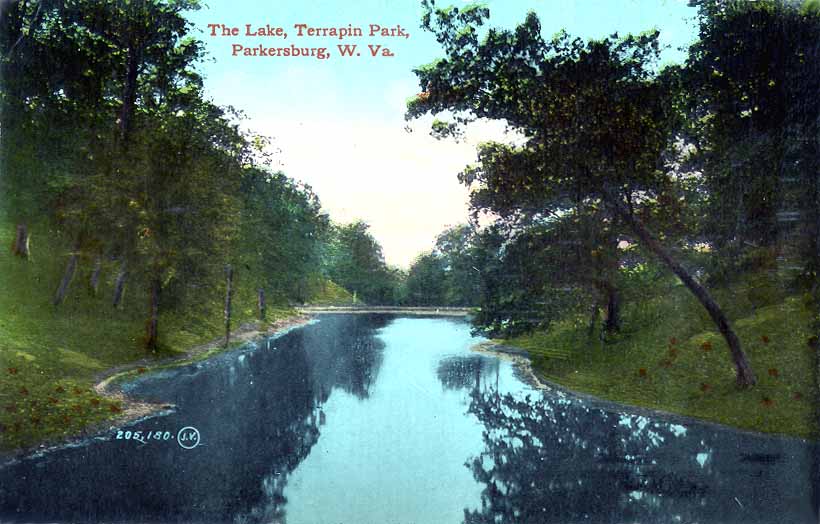
|
|
|
|
|
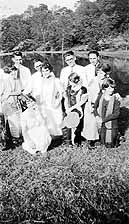 |
|
A
view of Terrapin Lake and |
|
Terrapin
Lake in 1907. |
|
A
family visits Terrapin Park Lake in the early 1900s. |
|
|
|
TERRAPIN PARK
By Joan Pritchard of The Parkersburg News
Few people remember, when at the time of World War I, Parkersburg had three major parks - the City Park, Shattuck Park and Fair Grounds, and Terrapin Park. Terrapin Park was located at 25th and St. Mary's Pike, well outside of the city limits. It was accessible by either the Outer Loop or Pottery Junction trolleys. At one time this park, which was privately owned, was known for being one of the finest and most famous amusement parks in the state. Shortly before 1900, a company headed by Charles Shattuck, built a large casino there. The casino had a large auditorium, which seated 1,200 to 1,500 persons. This could be enlarged to hold over 2,000 by rolling up the large doors that served as walls and using the verandas. When the place was enlarged, park benches were brought in. The large stage of the auditorium was equipped with elaborate scenery and such modern facilities that it drew many of the top names in show business. Dramas, comedies, minstrels and vaudeville acts, including the famous Weber and Friends, played the auditorium. In the rear of the casino was a large artificial lake in a picturesque setting for canoeing, and an area for picnic tables with benches which added to the popularity of the park.
Terrapin Park in Parkersburg was given this name because of a small humped up knoll on the property. In 1913 Henry L. Brenig added a roller-coaster, a merry-go-round, dance halls, a skating rink and other items of amusement, and it began to develop an atmosphere of a Coney Island.
A Tunnel of Love, a Ferris Wheel, and other rides followed as did games of ring-toss, ball pitch, and shooting galleries creating a mid-way complete with a fun-house, cotton candy, hot dogs and assorted bakers. The roller-coaster, a wooden structure, was called The Dazy Dazier Dip Coaster and stood at the left of the front entrance to the park. Rides were 10¢ for adults and 5¢ for children. Small boys made a lot of money by retrieving hats blown from the heads of the riders who were unprepared for its wild ride.
In 1916 Paul and Jack Crane took over the park and had great success for two seasons. You could hear the music of the merry-go-round, amusement noises, and laughter for blocks.
When the park was closed for the season after Labor Day in September of 1917, a full-blown fire flared up one midnight under the stage of the auditorium. The fire lighted the area for blocks. As firemen fought the blaze, the crowd noticed the American flag, which for some reason had not been removed, and it waved unscorched, spotlighted by the leaping flames. Only when the roof caved in was the flag touched. The fire was thought to have been set by religious fanatics objecting to the war. Not covered by insurance, the place was dismantled.
